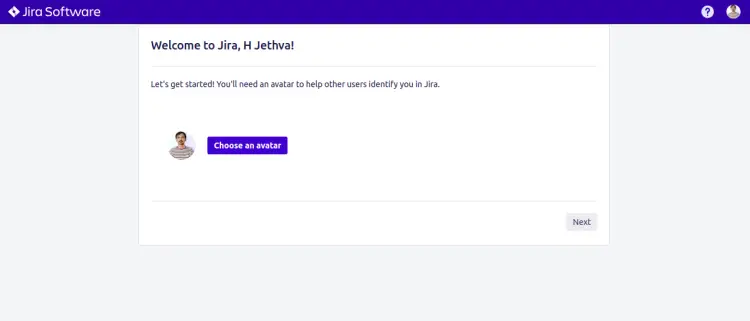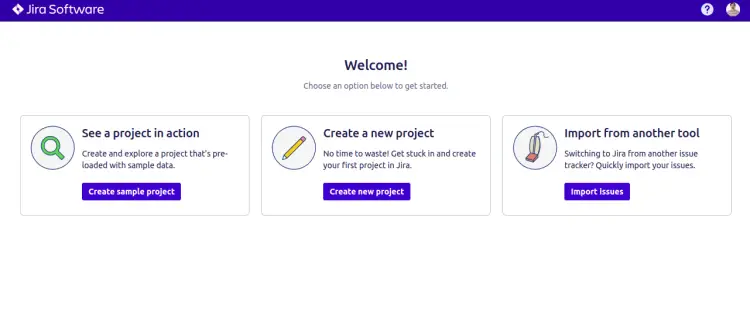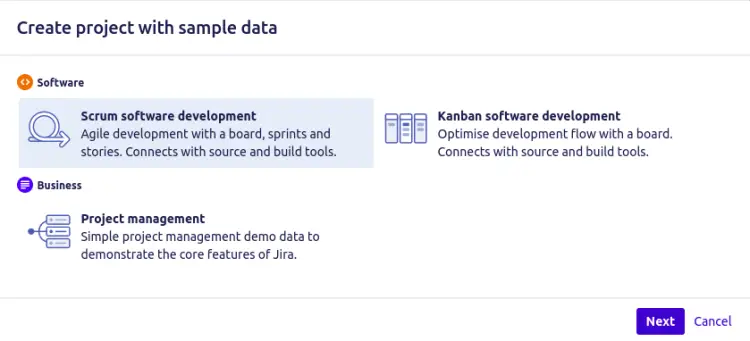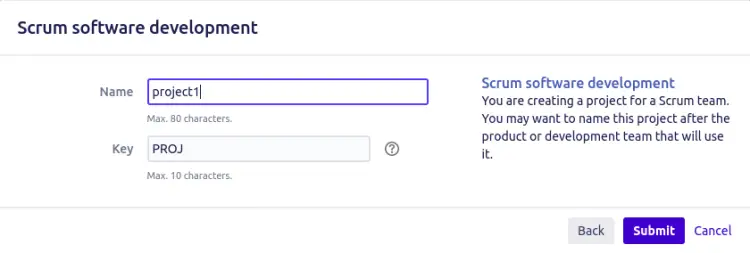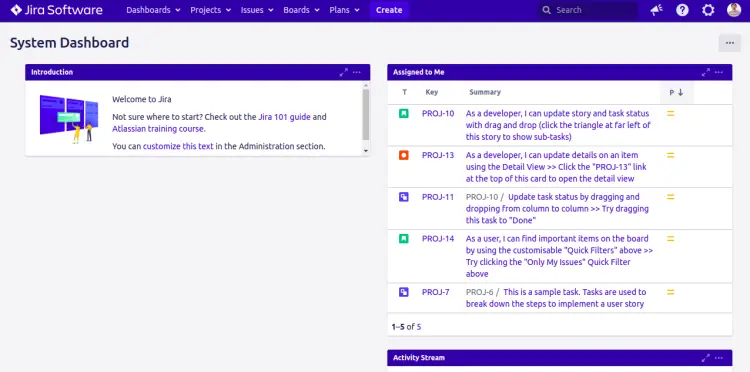How to Install Jira Agile Project Management Tool on Debian 11
Jira is one of the most popular project management applications developed by Atlassian. It is commercial software and is available as a Trial version for a limited time. You can use Jira as a Customer Service to track the work progress and issues. It offers a user-friendly web UI that helps beginners users to track and manage support tickets. It offers a rich set of features, including, bug tracking, feature implementation, customizable and extensible, platform-independent, and many more.
In this tutorial, we will explain how to install the Jira project management application on the Debian 11 server.
Prerequisites
- A server running Debian 11 with a minimum of 4GB of RAM.
- A root password is configured on the server.
Install Required Packages
Before starting, you will need to update and upgrade all system packages to the latest version. Run the following command to update and upgrade all of them:
apt update -y
apt upgrade -y
Next, install Java and other required dependencies with the following command:
apt install openjdk-11-jdk unzip fontconfig -y
Once Java is installed, you can verify the Java version using the following command.
java --version
You should see the Java version in the following output.
openjdk 11.0.18 2023-01-17 OpenJDK Runtime Environment (build 11.0.18+10-post-Debian-1deb11u1) OpenJDK 64-Bit Server VM (build 11.0.18+10-post-Debian-1deb11u1, mixed mode, sharing)
Once you are finished, you can proceed to the next step.
Create a Database for Jira
Jira uses MySQL/MariaDB to store its data. So you will need to install the MySQL server on your server. By default, the MySQL server package is not included in the Debian 11 default repository. So you will need to add the MySQL repository to your system.
First, download the MySQL repository package and install it with the following command.
wget https://dev.mysql.com/get/mysql-apt-config_0.8.22-1_all.deb
apt install ./mysql-apt-config_0.8.22-1_all.deb
Next, update the repository and install the MySQL server package using the following command.
apt update -y
apt-get install mysql-server -y
During the installation, you will be asked to set a root password for MySQL.
Once the MySQL server is installed, you can verify the status of the MySQL using the following command:
systemctl status mysql
You should see the following:
? mysql.service - MySQL Community Server
Loaded: loaded (/lib/systemd/system/mysql.service; enabled; vendor preset: enabled)
Active: active (running) since Tue 2023-02-07 05:33:40 UTC; 8s ago
Docs: man:mysqld(8)
http://dev.mysql.com/doc/refman/en/using-systemd.html
Main PID: 5946 (mysqld)
Status: "Server is operational"
Tasks: 39 (limit: 4675)
Memory: 370.7M
CPU: 1.284s
CGroup: /system.slice/mysql.service
??5946 /usr/sbin/mysqld
Feb 07 05:33:39 debian11 systemd[1]: Starting MySQL Community Server...
Feb 07 05:33:40 debian11 systemd[1]: Started MySQL Community Server.
Next, log in to the MySQL shell with the following command:
mysql -u root -p
After login, create a database and user using the following command:
mysql> CREATE DATABASE jiradb CHARACTER SET utf8mb4 COLLATE utf8mb4_bin;
mysql> CREATE USER 'jirauser'@'localhost' IDENTIFIED BY 'password';
Next, grant all the privileges to the jiradb with the following command:
mysql> GRANT ALL ON jiradb.* TO 'jirauser'@'localhost' WITH GRANT OPTION;
Next, flush the privileges and exit from the MariaDB shell with the following command:
mysql> FLUSH PRIVILEGES; mysql> EXIT;
Once you are finished, you can proceed to the next step.
Install Jira on Debian 11
First, go to the Jira official download page and download the latest version of Jira with the following command:
wget https://www.atlassian.com/software/jira/downloads/binary/atlassian-jira-software-9.6.0-x64.bin
After the successful download, change the permission of the downloaded file with the following command:
chmod a+x atlassian-jira-software-9.6.0-x64.bin
Next, install the Jira software with the following command:
./atlassian-jira-software-9.6.0-x64.bin
You will be asked for several questions as shown below:
This will install Jira Software 9.6.0 on your computer. OK [o, Enter], Cancel [c]
Press Enter to continue. You should see the following output:
Click Next to continue, or Cancel to exit Setup. Choose the appropriate installation or upgrade option. Please choose one of the following: Express Install (use default settings) [1], Custom Install (recommended for advanced users) [2, Enter], Upgrade an existing Jira installation [3] 2
Type 2 and hit Enter for custom installation. You should see the following output:
Select the folder where you would like Jira Software to be installed. Where should Jira Software be installed? [/opt/atlassian/jira]
Select the Jira installation path and hit Enter. You should see the following output:
Default location for Jira Software data [/var/atlassian/application-data/jira]
Now, press Enter to continue. You should see the following output:
Configure which ports Jira Software will use. Jira requires two TCP ports that are not being used by any other applications on this machine. The HTTP port is where you will access Jira through your browser. The Control port is used to startup and shutdown Jira. Use default ports (HTTP: 8080, Control: 8005) - Recommended [1, Enter], Set custom value for HTTP and Control ports [2] 1
Type 1 and hit Enter to use the default HTTP port. You should see the following output:
Jira can be run in the background. You may choose to run Jira as a service, which means it will start automatically whenever the computer restarts. Install Jira as Service? Yes [y, Enter], No [n] y
Type y and hit Enter to install Jira as a Service. You should see the following output:
Details on where Jira Software will be installed and the settings that will be used. Installation Directory: /opt/atlassian/jira Home Directory: /var/atlassian/application-data/jira HTTP Port: 8080 RMI Port: 8005 Install as service: Yes Install [i, Enter], Exit [e] i
Type i and hit Enter to start the installation. You should see the following output:
Please wait a few moments while Jira Software is configured. Installation of Jira Software 9.6.0 is complete Start Jira Software 9.6.0 now? Yes [y, Enter], No [n] y
Type y and hit Enter to start Jira software. Once the installation has been finished successfully, you should see the following output:
Please wait a few moments while Jira Software starts up. Launching Jira Software ... Installation of Jira Software 9.6.0 is complete Your installation of Jira Software 9.6.0 is now ready and can be accessed via your browser. Jira Software 9.6.0 can be accessed at http://localhost:8080 Finishing installation ...
By default, Jira listens on port 8080. You can check it with the following command.
ss -antpl | grep java
You should see the following output:
LISTEN 0 100 *:8080 *:* users:(("java",pid=6568,fd=203))
LISTEN 0 1 [::ffff:127.0.0.1]:8005 *:* users:(("java",pid=6568,fd=346))
Configure Jira
Before configuring Jira, download the MySQL JDBC driver and copy it to the Jira installation directory.
wget https://dev.mysql.com/get/Downloads/Connector-J/mysql-connector-java-8.0.18.zip
Next, unzip the downloaded file with the following command:
unzip mysql-connector-java-8.0.18.zip
Next, copy the MySQL connector to the Jira installation directory:
cp mysql-connector-java-8.0.18/mysql-connector-java-8.0.18.jar /opt/atlassian/jira/lib
Next, stop and start the Jira service to apply the changes:
/etc/init.d/jira stop
/etc/init.d/jira start
Perform Jira Web Installation
Jira is now installed and configured, you can now access the Jira web interface using the URL http://your-server-ip:8080. You will be redirected to the Jira welcome screen:
Choose the option "i'will set it up myself" and click on the Next button. You should see the database configuration screen:
Chose "My Own Database", provide your database details and click on the Next button. You should see the application configuration screen:
Type your application title, Mode, URL, and click on the Next button. You should see the license screen:
Provide your trial license key and click on the Next button. You should see the administrator account screen:
Define your administrator account details and click on the Next button. You should see the following screen:
Click on the Finish button to complete the installation. You should see the language selection screen:
Choose your language and click on the Continue button. You should see the following screen:
Choose your avatar and click on the Next button. You should see the project creation screen:
Click on "Create new project" to create your first project. You should see the following screen:
Select "Scrum software development" and click on the Next button. You should see the following screen:
Provide your project name and key, then click on the Submit button. You should see the Jira dashboard on the following screen:
Conclusion
In this post, you learned how to install the Jira project management system on Debian 11. You can now deploy Jira in the production environment and start managing your project from the web-based interface. Feel free to ask me if you have any questions.








